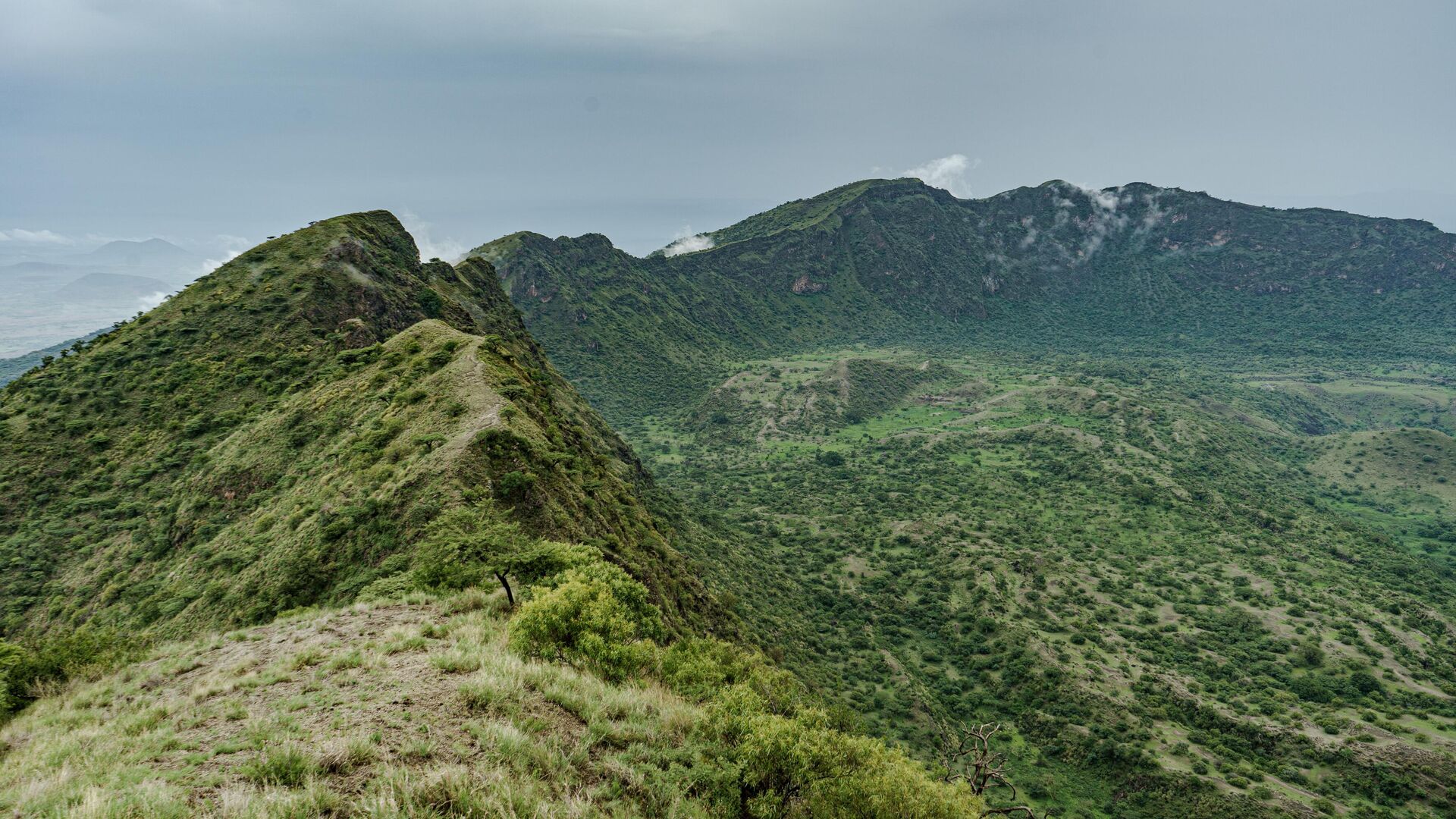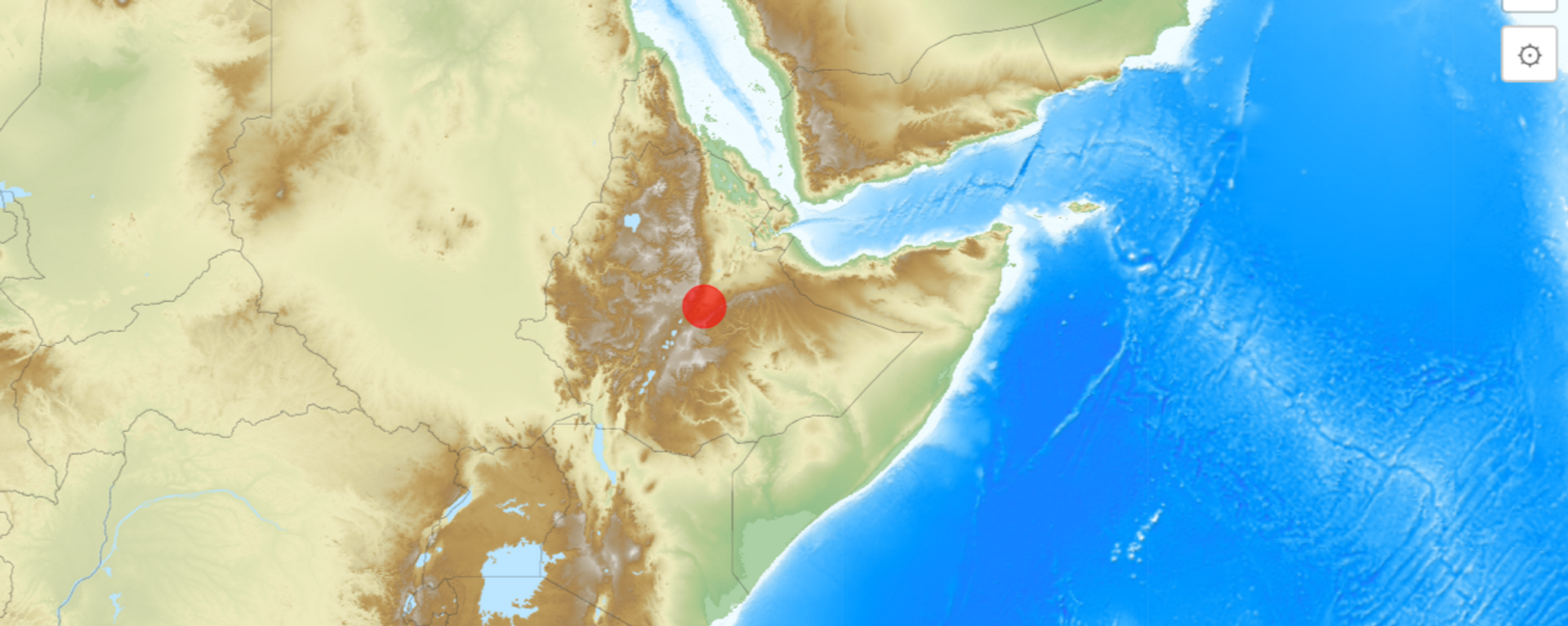https://en.sputniknews.africa/20250223/unprecedented-methane-emissions-detected-at-ethiopias-mount-fentale-1070791130.html
Unprecedented Methane Emissions Detected at Ethiopia’s Mount Fentale
Unprecedented Methane Emissions Detected at Ethiopia’s Mount Fentale
Sputnik Africa
Specialized satellites track methane, a potent greenhouse gas, to detect and measure emissions from agriculture, oil and gas operations, landfills, and natural... 23.02.2025, Sputnik Africa
2025-02-23T11:13+0100
2025-02-23T11:13+0100
2025-02-24T17:10+0100
sub-saharan africa
ethiopia
addis ababa
european union (eu)
satellites
methane
east africa
science
discovery
technology
https://cdn1.img.sputniknews.africa/img/07e9/02/17/1070791240_0:29:3539:2020_1920x0_80_0_0_f2dfe73ad26419dc2e6c76f2149dc673.jpg
Satellites have recently identified "unusually large volumes" of methane emissions emanating from Mount Fentale in Ethiopia, after months of seismic activity that displaced thousands of residents, the New Scientist magazine has reported.According to scientists, the exact source of the methane is still unknown, but the volume of emissions is surprising.Initially spotted by a European Union satellite, the methane was detected near the volcano, approximately 120 kilometers east of Addis Ababa. This finding led GHGSat, a Canadian company that specializes in monitoring methane, to concentrate its high-resolution satellites on the area.Volcanologist John Stix from McGill University reportedly explained that while it is common for volcanoes to release gases like carbon dioxide and sulfur dioxide, "it's unusual" to observe this extent of methane linked to volcanic activity. He pointed out that such observations have only become feasible with the growing number of satellites dedicated to tracking methane emissions from places such as oil fields and coal mines.
https://en.sputniknews.africa/20250215/magnitude-60-earthquake-hits-central-ethiopia-1070668626.html
ethiopia
addis ababa
east africa
Sputnik Africa
feedback@sputniknews.com
+74956456601
MIA „Rossiya Segodnya“
2025
Christina Glazkova
https://cdn1.img.sputniknews.africa/img/07e7/0b/07/1063380906_0:0:673:674_100x100_80_0_0_79628b4d0cd9f29291a57aa13bbf9e7a.jpg
Christina Glazkova
https://cdn1.img.sputniknews.africa/img/07e7/0b/07/1063380906_0:0:673:674_100x100_80_0_0_79628b4d0cd9f29291a57aa13bbf9e7a.jpg
News
en_EN
Sputnik Africa
feedback@sputniknews.com
+74956456601
MIA „Rossiya Segodnya“
Sputnik Africa
feedback@sputniknews.com
+74956456601
MIA „Rossiya Segodnya“
Christina Glazkova
https://cdn1.img.sputniknews.africa/img/07e7/0b/07/1063380906_0:0:673:674_100x100_80_0_0_79628b4d0cd9f29291a57aa13bbf9e7a.jpg
ethiopia, addis ababa, european union (eu), satellites, methane, east africa, science, discovery, technology
ethiopia, addis ababa, european union (eu), satellites, methane, east africa, science, discovery, technology
Unprecedented Methane Emissions Detected at Ethiopia’s Mount Fentale
11:13 23.02.2025 (Updated: 17:10 24.02.2025) Christina Glazkova
Writer / Editor
Specialized satellites track methane, a potent greenhouse gas, to detect and measure emissions from agriculture, oil and gas operations, landfills, and natural sources. They help identify emission hotspots, guide policy, and support global efforts to curb emissions, enhancing our understanding of methane's impact on climate change.
Satellites have recently identified "unusually large volumes" of methane emissions emanating from Mount Fentale in Ethiopia, after months of seismic activity that
displaced thousands of residents, the New Scientist magazine has reported.
According to scientists, the exact source of the methane is still unknown, but the volume of emissions is surprising.
Initially spotted by a
European Union satellite, the methane was detected near the volcano, approximately 120 kilometers east of Addis Ababa. This finding led GHGSat, a Canadian company that specializes in monitoring methane, to concentrate its high-resolution satellites on the area.
On January 31, they reported methane emissions from the crater "at a rate of 58 tonnes per hour," equating to about 1,400 tonnes per day—comparable to the emissions produced by burning around 20 million kilograms of coal.
Volcanologist John Stix from McGill University reportedly explained that while it is common for volcanoes to release gases like carbon dioxide and sulfur dioxide, "it's unusual" to observe this extent of methane linked to volcanic activity. He pointed out that such observations have only become feasible with the growing number of satellites dedicated to tracking methane emissions from places such as oil fields and coal mines.



